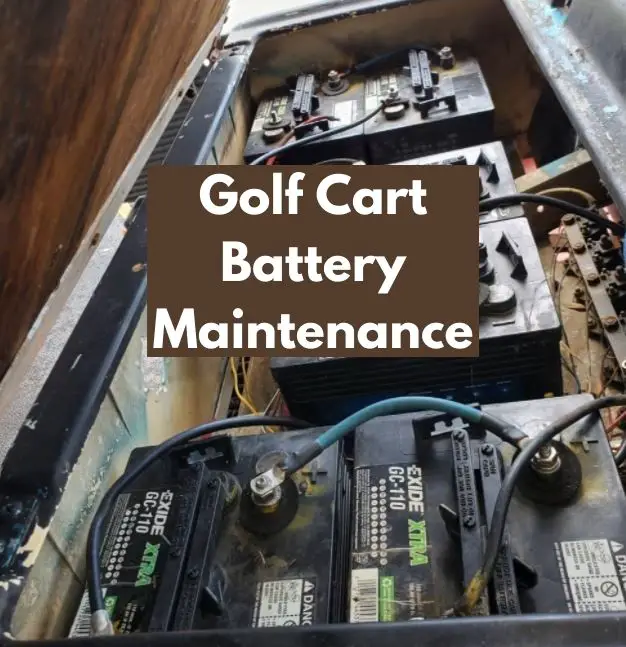If you own a golf cart, then you know that the battery is one of the most important parts of the vehicle. Without a functioning battery, your golf cart won’t work! That’s why golf cart battery maintenance is so important.
In this guide, we’ll provide a complete walkthrough on how to care for golf cart batteries.
We’ll discuss everything from how to charge your golf cart battery to how to clean it.
We’ll also provide some tips on prolonging the life of your golf cart battery.
If you’re interested in extending the life and improving the efficiency of your golf cart batteries, then keep reading!
Golf Cart Battery Maintenance Tips
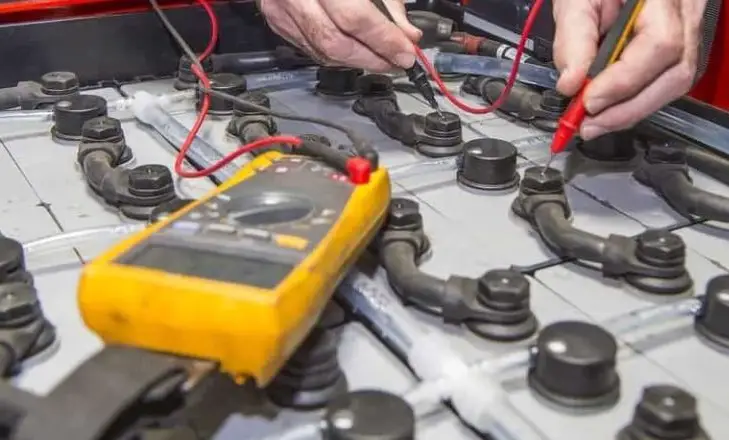
Learning proper golf cart battery care procedures is a pretty simple process.
Check out the following tips below to keep your battery running great.
Make Sure Your Batteries Are Dry And Clean
Keep your golf cart battery clean. Dirt and dust can build up on the battery over time, which can reduce its efficiency.
Use a damp cloth to clean the battery regularly.
Make sure the battery compartment is dry- you do NOT want your batteries in any kind of moist area or in standing water!
Confirm They’re Secure And Tight
Make sure the batteries are secure and can’t be jostled around while the golf cart is in motion.
If your batteries are bumping around it can damage them, or at the very least will reduce their efficiency.
They may be held in place by clams or cords, so check occasionally to make sure these devices are still working properly.
Charge Them Properly (With A Good Charger)
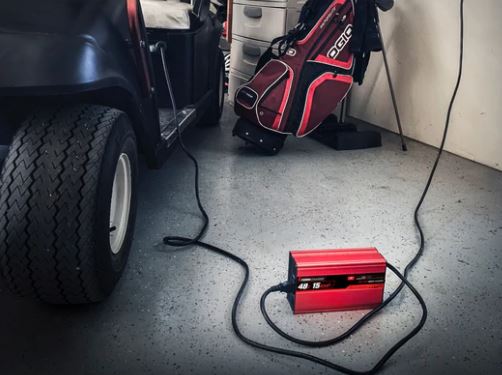
Make sure to charge your golf cart battery properly using a quality charger that ideally has an auto shutoff.
Overcharging or undercharging can damage the battery.
Follow the instructions in your golf cart’s owners manual for proper charging procedures.
Related: Our reviews of the best golf cart battery chargers.
Use A Trickle Charger Or Battery Tender Over Long Periods Of Inactivity
Batteries that are left unused for long periods of time can lose their charge.
There are some golf cart chargers that double as battery tenders, offering a small trickle charge to keep the battery active and full without overcharging it.
These are great for long periods where you won’t be using your golf cart, like during winter.
Read more: how long does it take to charge a golf cart?
Watch The Temperature
Avoid exposing your golf cart battery to extreme temperatures. Extreme heat or cold can damage the battery and reduce its lifespan.
Store your golf cart in a cool, dry place when not in use.
If you don’t plan on using your golf cart for an extended period of time, remove the battery and store it in a cool, dry place.
Make Sure Your Golf Cart Battery Has Water
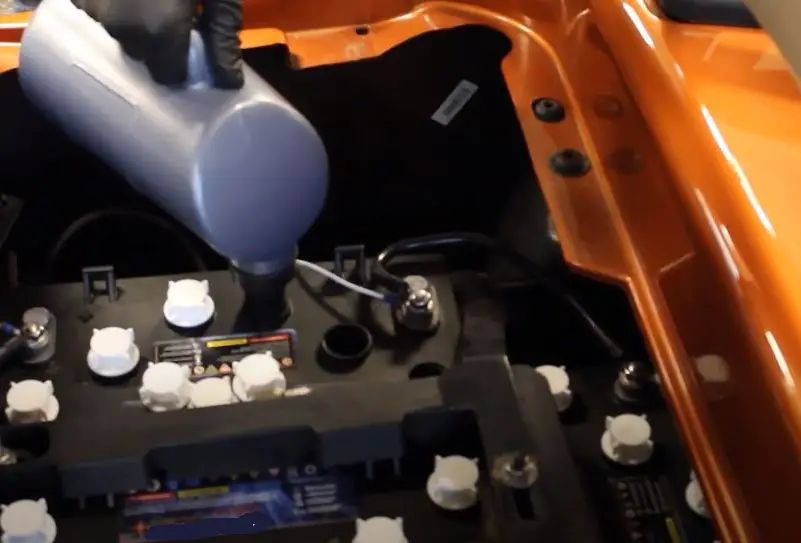
If you’ve got a traditional lead-acid battery, they need water in them!
If the golf cart battery water level drops too low it can damage the batteries so that they can’t be charged anymore, leaving you with an expensive golf battery replacement to take care of.
Use only distilled water when refilling the batteries.
If you have a lead-acid gel or AGM battery or lithium battery, you’re in the clear here: those types do not need water.
Related: how much are golf cart batteries?
Clean The Battery Terminals
Over time, gunk made of water, acid, and hydrogen gas can build up on the battery terminals which can corrode them.
That corrosion will at least reduce the performance of your battery, and in a worst case can lead to battery failure.
You’ll need to clean these terminals to protect them and keep them working their best.
How To Clean Your Golf Cart Battery Terminals
- To clean your terminals, first combine 1 cup of hot water with a tablespoon of baking soda and mix it together.
- Next, take a wire brush or old toothbrush, dipping it in the mixture and scrubbing the battery’s terminals to remove the corrosion.
- Last, spray off the mixture with water and wipe everything clean.
- You can put on some battery terminal protector after cleaning everything up if you’d like.
Check Your Vent Caps
Vent caps should always be tightly in place during charging and golf cart operation, so double check these while you’re doing the rest of your golf cart battery maintenance procedures.
Inspect The Cables
Inspect your golf cart battery cables, being sure to clean off any corrosion and checking for frayed wires.
Replace any frayed cables immediately.
Inspect the connectors that pair the wires to the batteries to make sure they’re tight and have a good connection.
Visually Inspect Your Golf Cart Battery
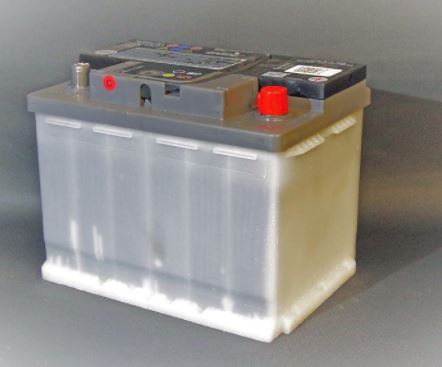
Monitor the condition of your golf cart battery regularly. If you notice any abnormalities (such as swelling, leaking, etc.), take the battery to a qualified technician for servicing.
By following these tips, you can help prolong the life of your golf cart battery and keep it in good condition. Thanks for reading!
Never Charge A Frozen Battery
Charging a frozen battery will destroy it, so be sure never to do that!
Always allow a battery that you suspect to be frozen to sit at room temperature for at least 24 hours before attempting to charge it.
Replace Your Batteries When It’s Time
If your golf cart battery is no longer holding a charge or showing physical damage, it’s time to replace them.
Check out our guide on how long do golf cart batteries last for more information on what to expect.
Wrapping Up Our Guide To Golf Cart Battery Maintenance
There are a few simple things you can do to help keep your golf cart battery in good condition.
By using a trickle charger or battery tender over long periods of inactivity, keeping the golf cart battery out of extreme temperatures, refilling with distilled water, cleaning the terminals and connectors, and regularly inspecting the condition of the golf cart battery, you can help ensure that your golf cart stays up and running all season long!
We hope you found this guide helpful.
Be sure to check out our other golf cart guides while you’re here:

